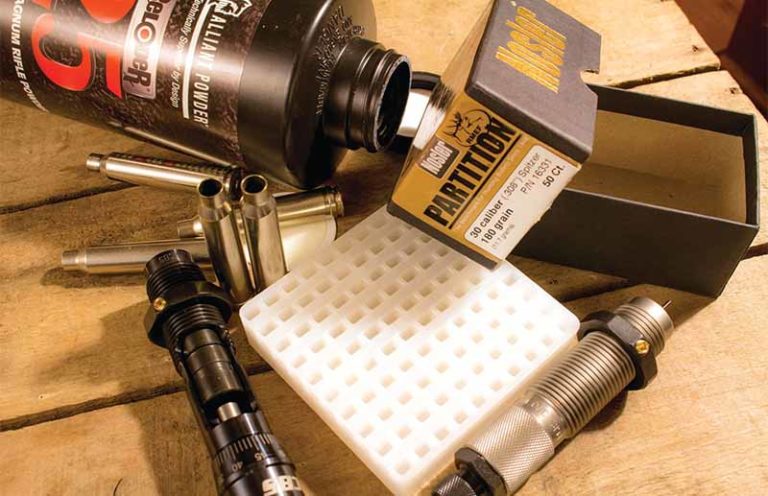
How do you survive when reloading components are running low? The answer is a diet of consuming leftovers.
Well, here we are again. As if the lack of factory-loaded ammunition wasn’t enough of a challenge to shooters, reloading components are becoming increasingly scarce, and costs are increasing daily. Even the reloading gear is a scarcity in some cases, with folks having issues getting presses, dies and more.
To put some rumors to rest, the drought is a result of a few factors, though none are intentional on the behalf of the producers. First, we have nearly 8 million new shooters, all of which who need some amount of ammunition to feed those new firearms. Second, this COVID-19 pandemic has forced manufacturers to adopt different work environments; social distancing requirements have certainly led to a reduction in output in several businesses. Third, the majority of the components produced are allocated to loaded ammunition, which makes sense, as that’s where the demand is greatest.
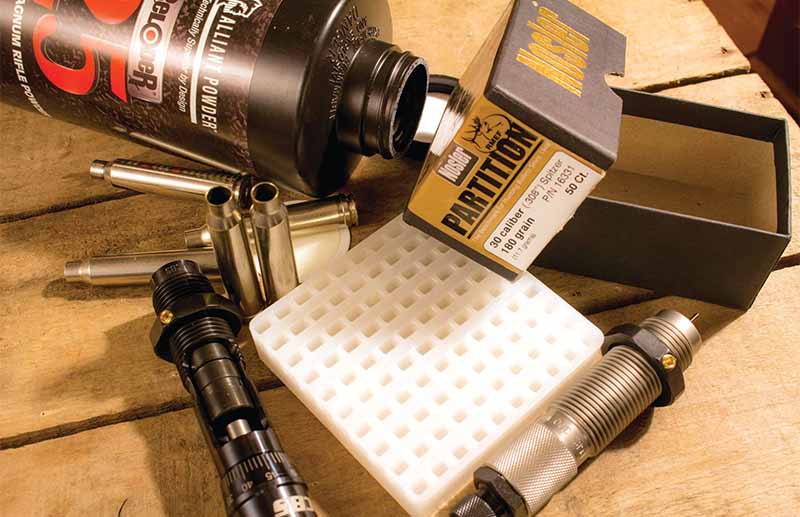
With the fate of Remington only recently decided, one of the four producers of primers has ceased production. While Vista Outdoor has acquired Remington Ammunition and their component production as well, that means that we are temporarily down one primer producer. So, as if things weren’t tight enough, we reloaders are left with the “leftovers,” if you will.
There’s also the fact that some folks are undoubtedly hoarding both ammo and components. I’m not here to pass judgment on anyone, nor am I about to suggest that there should be any sort of limit on the amount of ammo, components or firearms anyone should be able to own, but the truth is the truth. If you’re sitting on 10,000 primers, the problems outlined here might not pertain to you—but if you’re new to reloading or your supplies are low, they’re a reality.
Looking at the situation, we reloaders are now forced to make do with what we have. This could easily translate into changing brand of primer, or using a magnum primer where a standard primer was once employed. While the transition is possible in some situations and not a wise move in others, there are issues involved with switching primers. The same can be said for switching brands or type of cases, as the volumes of varying cases can be different enough to affect the pressures generated.
Switching Cases
When I was a relatively new reloader, a friend gifted me about 50 once-fired nickel-plated Remington cases for my new-to-me .300 Winchester Magnum. I’d developed a handload using a 180-grain Sierra GameKing boat-tail over IMR 4350, in Frontier (Hornady) cases. Eager to use those nickel cases, which wouldn’t tarnish in the damp of the Catskills and Adirondacks, I full-length resized them, installed the same CCI250 primers and charge weight of IMR 4350, then seated those Sierra 180s on top.
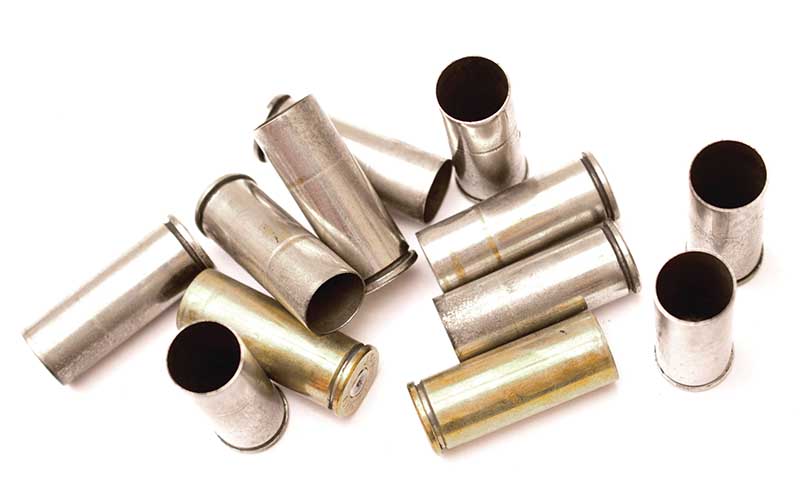
Initially, I thought something happened to my riflescope—it was an old steel-tube Weaver—because the bullets were striking 2½ inches higher and 1½ inches to the right, in a group about twice as large as it had been. Puzzled, I grabbed three rounds of the Frontier ammo and printed the same ¾-inch group the rifle had been printing, centered on the bull’s-eye. The difference was the cases. Though there was no issue with excessive pressures, I ended up using those cases for a different bullet, and it worked out just fine.
This phenomenon seems to be amplified in the higher-pressure cartridges; lower-pressure rounds like the .30-30 Winchester or the .45-70 Government won’t show these effects nearly as much as the .22-250 Remington or the 7mm Weatherby Magnum, both of which operate at or near SAAMI’s 65,000-psi maximum. Should you be forced to switch brands of rifle case, I recommend using a lighter powder charge and working back up; as an example, those Remington cases held 88.2 grains of water, while the Frontier cases held 93.1 grains of water, and that volume difference equated to a significant pressure difference.
Switching Primers
Switching primer brands can also have a considerable effect on the performance of your ammunition. If your loads are on the edge of giving high pressure, a primer switch has the potential to push things over the edge. I had this happen to me with a Ruger .308 Winchester that gave the best accuracy with charge weights near maximum. In the crunch of 2013—which may be surpassed by this one—I ran out of the CCI 200 primers and could only get Remington No. 9½ large-rifle primers.
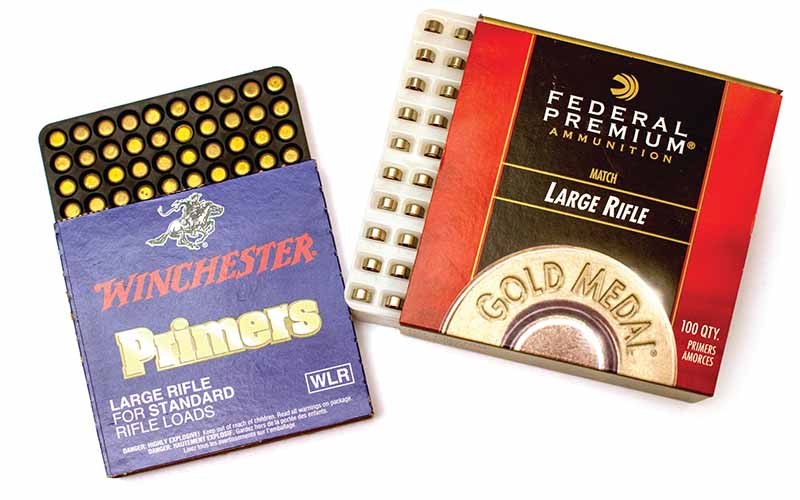
The difference in primer heat generated a higher pressure in my rifle, flattening and cratering primers, and making bolt extraction very difficult. Until I could get the CCI 200s, I had to back off the heat (and, subsequently, I actually switched from IMR4064 to H380 powder when using those Remington primers) and gave up a bit in the accuracy department, though not enough for deer to notice.
Switching Bullets
Switching bullets has also been a challenge in certain rifles. I’ve had guns like projectiles with more bearing surface, and I’ve had some show a preference for lighter bullets. When one or the other is unavailable and a switch is made, problems can arise.
Switching from a cup-and-core bullet to a monometal bullet will create a different pressure curve. While many of us take this for granted, I know many novice or inexperienced reloaders believe that a 180-grain bullet is a 180-grain bullet, irrespective of construction or conformation, and feel that no adjustment need be made when switching between them. The monometal boat-tail spitzer with polymer tip is a different animal from a flat base, round nose cup-and-core bullet, and though a black bear on bait 65 yards from the shooter might not care, the barrel will.
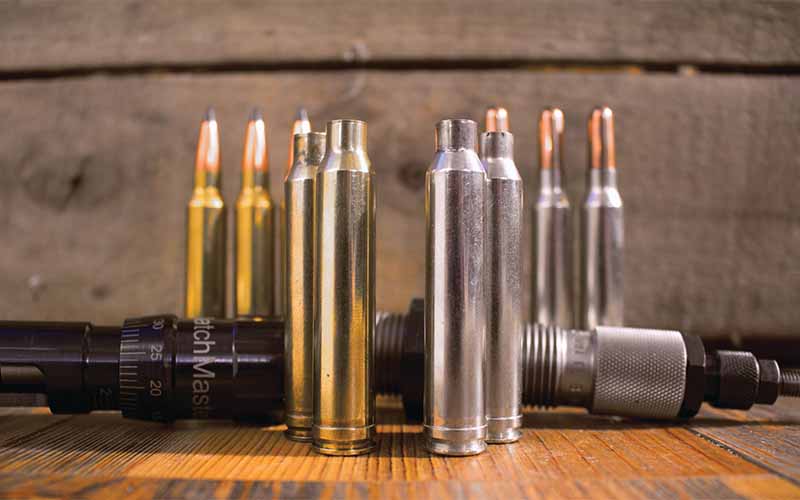
Likewise, a 6.5mm 140-grain Sierra MatchKing has a different design than a 140-grain Berger VLD Target. Both are good bullets, but will probably not be interchangeable if you’re serious about long-range shooting.
Pistol cartridges, with the exception of the big guys like the .454 Casull, .44 Magnum and .460 and .500 S&W, aren’t nearly as sensitive to changes in case brand or primer brand. Winchester’s large pistol primers (WLP) are labeled for use with both standard and magnum loads. But, in my experience, the .45 ACP won’t deliver radically different ballistics with any one of the large pistol primers, and switching between them isn’t a big deal.
The Final Round
It’s times like these that cause many people to stock up on those components they use most, sometimes to excess, and it’s definitely times like these that spark an interest in reloading. Though I shoot much more reloaded ammunition than factory ammo, even in times of plenty, I hope this drought serves to inspire all shooters to learn how to reload their ammo, whether it’s for a handgun, shotgun or rifle.
Editor's Note: This article originally appeared in the March 2021 issue of Gun Digest the Magazine.
More On Reloading:
- Tips For Reloading the .30-06 Springfield
- Loving Your Luger: Reloading the 9mm Luger
- Handloading: Tips For Reloading The 7mm Rem Mag
- How To: Tips For Reloading the .223 Remington
- Reloading Bench: The Inside On Reloading For The .30-30 Winchester

Next Step: Get your FREE Printable Target Pack
Enhance your shooting precision with our 62 MOA Targets, perfect for rifles and handguns. Crafted in collaboration with Storm Tactical for accuracy and versatility.
Subscribe to the Gun Digest email newsletter and get your downloadable target pack sent straight to your inbox. Stay updated with the latest firearms info in the industry.

![Best Concealed Carry Guns In 2025 [Field Tested] Wilson Combat EDC X9S 1](https://gundigest.com/wp-content/uploads/Wilson-Combat-EDC-X9S-1-324x160.jpg)


![Best 9mm Carbine: Affordable PCCs [Tested] Ruger Carbine Shooting](https://gundigest.com/wp-content/uploads/Ruger-Carbine-Shooting-100x70.jpg)
![Best AR-15: Top Options Available Today [Field Tested] Harrington and Richardson PSA XM177E2 feature](https://gundigest.com/wp-content/uploads/Harrington-and-Richardson-PSA-XM177E2-feature-100x70.jpg)
